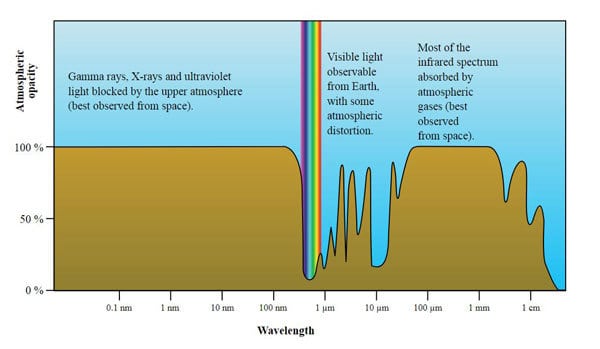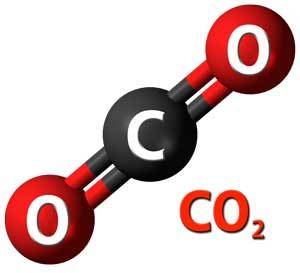Atmospheric Absorption – Shielding The Planet From Solar Radiation

The Earth is bombarded with large amounts of solar radiation every day. Although it is crucial for all life on the planet, it is just as deadly. Atmospheric Absorption protects us from its most harmful effects.
Atmospheric Absorption is defined as the process through which gases and small particles in the atmosphere absorb a large percentage of solar radiation. It plays a crucial role in protecting all lifeforms on the planet from the most harmful effects of the sun's ultraviolet and infrared radiation.
Solar radiation is essential for the continual existence of all life on Earth. If the full amount of solar radiation is allowed to reach the surface unfiltered, though, it will be deadly and cause complete devastation.
A large portion of electromagnetic energy is scattered, refracted, diffused, and reflected by the surface and atmosphere. A significant amount of radiation is also absorbed by the atmosphere, a process called Atmospheric Absorption.
This article examines what atmospheric absorption is, how it occurs, and what parts of solar radiation are affected.
Atmospheric Absorption Definition
From the introduction, it is clear that atmospheric absorption forms a significant and essential part of the way solar radiation gets regulated by the planet. To understand how this process works, atmospheric absorption needs to be more clearly defined.
What Is Atmospheric Absorption?

Atmospheric Absorption is the process through which gases and small particles in the atmosphere absorb a large percentage of solar radiation. It plays a crucial role in protecting all lifeforms on the planet from the most harmful effects of the sun's ultraviolet and infrared radiation.
The sun's radiation consists of a wide range of light in the electromagnetic spectrum, from short-wavelength x-rays on the one side to long-wavelength radio waves on the opposite side of the spectrum.
The three most important forms of solar radiation that reach and impact the Earth is:
- Visible Light
- Infrared Light
- Ultraviolet Light.
Visible light forms roughly half the total amount of solar radiation reaching the atmosphere.
Atmospheric absorption is responsible for a significant portion of this solar radiation not reaching the surface of the planet, specifically infrared and ultraviolet light.

The Solar Spectrum Showing The Absorption & Transmission Of Different Wavelengths
Of the three primary components that make up solar radiation, visible light is the only one that reaches the planet's surface without any significant amount of absorption or filtration taking place.
In contrast, infrared and ultraviolet light gets subjected to a significant amount of absorption in the atmosphere. In the next section, we will discuss how this takes place.
How Atmospheric Absorption Occurs
The atmosphere absorbs 23 percent of all incoming solar energy. It does so through the ability of specific gases and small particles to absorb different wavelengths of radiation in the solar spectrum.
The regions in the spectrum that travels through the atmosphere without much absorption and reaches the planet's surface relative unaffected are called atmospheric windows. Visible light falls within this region.
The parts of the electromagnetic spectrum that gets absorbed by the atmosphere are known as absorption bands. Infrared and ultraviolet light are the two biggest sources of radiation fall within this adsorption range.
The three most significant gases responsible for absorbing solar radiation is:
- Water Vapor (H₂O)
- Carbon Dioxide (CO₂)
- Ozone (O₃)
The way in which these gases absorb solar radiation is by a form of energy exchange in which gas molecules turn incoming light energy into heat. As a result, the atmosphere experience a rise in temperature where absorption takes place.

Water vapor is responsible for absorbing the largest amount of solar radiation. Combined with carbon dioxide, water moisture is mainly responsible for the abortion of infrared radiation that sits on the side of the electromagnetic scale comprised of longer wavelengths.
The largest concentration of ozone is found in the stratosphere. It is here in the ozone layer that the highest percentage of ultraviolet light gets absorbed (which sits on the side of the electromagnetic scale comprised of shorter wavelengths.)
UV light consists of Ultraviolet-A, Ultraviolet-B, and Ultraviolet-C rays. Of these three, Ultraviolet-C is by far the most dangerous. However, ozone absorbs more than 90 percent of this form of ultraviolet light.
Ozone also absorbs around 50 percent of Ultraviolet-A and 90 percent of Ultraviolet-B radiation. The 10 percent of UV-B that does reach the Earth's surface is enough to still pose a significant threat to human health.
It should be noted, however, that even though the gases mentioned here are responsible for absorbing a large amount of solar radiation (that can be extremely dangerous to all life on Earth), it is not the only source for preventing solar radiation from reaching the surface.
Dust and other small particles are the primary sources responsible for scattering and absorbing the total effective amount of solar radiation. It is through this process that the most significant impact of solar radiation is diminished.
Importance Of Atmospheric Absorption
It should be self-evident from the information already provided in this post just how crucial atmospheric absorption is to the survival of all life on Earth.
To emphasize the importance of this process, two key areas will be highlighted where the absence of atmospheric absorption will be catastrophic to the planet.
1) Ultraviolet Radiation Protection
Almost no Ultraviolet-C light reaches the planet's surface since more than 99 percent gets absorbed by ozone in the atmosphere. UV-C light is the most dangerous form of ultraviolet radiation and can cause severe burns, eye damage, and skin cancer.
Even if only 50 percent of UV-C radiation were allowed to reach the surface, the result would be catastrophic for all life on Earth, making outside exposure to the sun almost impossible.
(The same applies to Ultraviolet-B radiation, where around 90 percent of this light is blocked by the atmosphere.)
2) Warming Of The Planet's Surface

Infrared light is responsible for warming the surface of the planet, which is essential for the existence of every biological organism (humans included.)
A fine balance exists between the amount of heat the Earth receives and the amount that gets radiated back into space. A large percentage of IR light gets absorbed by water vapor and carbon dioxide in the atmosphere.
In the absence of this absorption, heat will build up at a much faster rate than it can be expelled, which will make the planet uninhabitable in a very short space of time.
Everything in this section has already been mentioned throughout this post, but it was worth emphasizing to highlight just how crucial the atmospheric absorption process is.
Conclusion
From this post, it is clear that although it not such a well-known topic, atmospheric absorption forms a crucial part of the Earth's global climate and weather systems.
This article focused on explaining what atmospheric absorption is, how it takes place, and its importance to the planet and all life on it.
Feel free to leave any comments, questions, or suggestions you may have. Your opinion is valued and will be attended to as soon as possible.
Never miss out again when another interesting and helpful article is released and stay updated, while also receiving helpful tips & information by simply clicking on this link .
Until next time, keep your eye on the weather!

